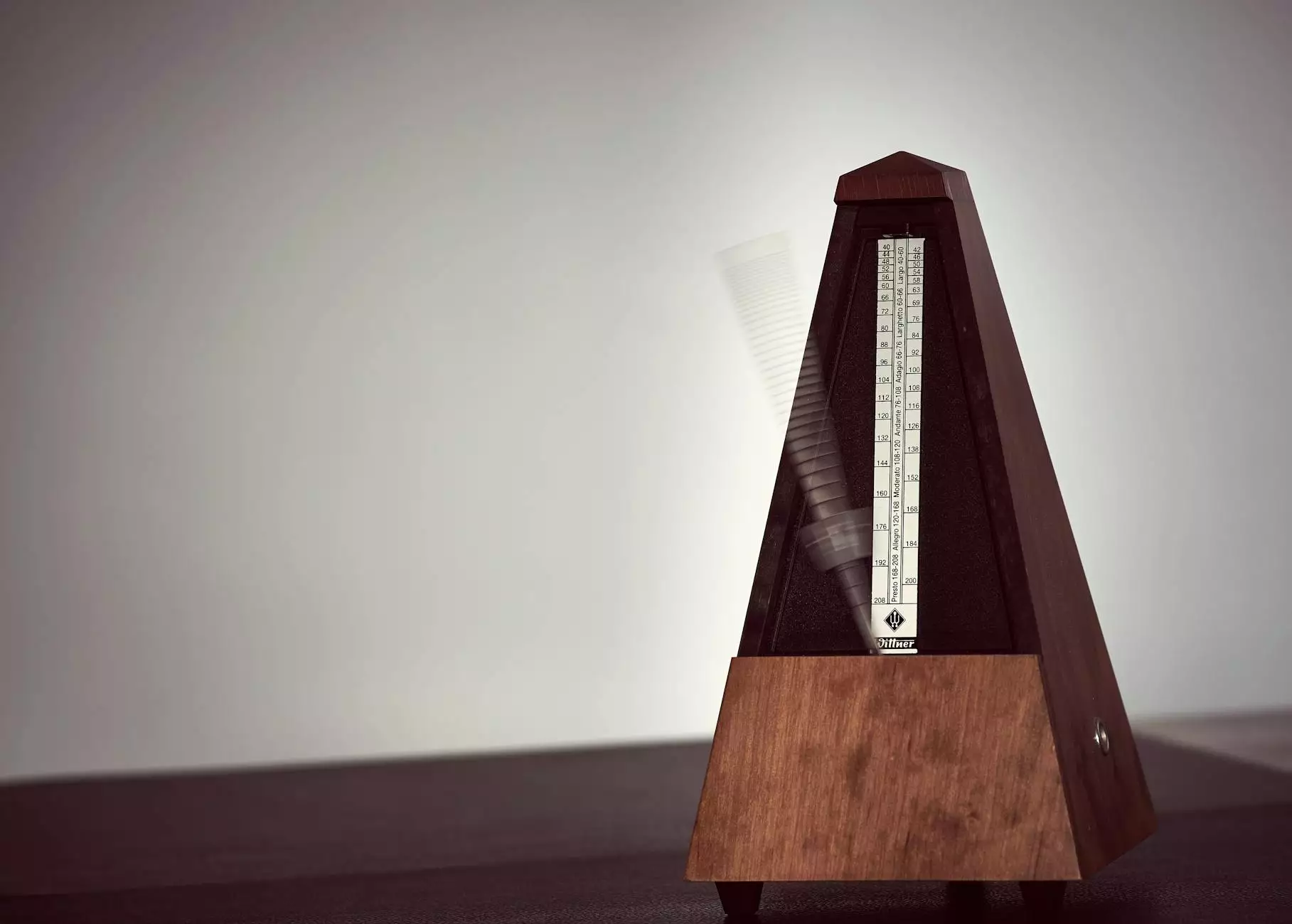Understanding Traditional Metronome Markings in Music

In the world of music, precision and timing are paramount. One of the most significant tools to help musicians achieve these qualities is the metronome. Traditionally, metronome markings have served as essential reference points for musicians throughout history. This article delves deep into the intricacies of traditional metronome markings, exploring their origins, uses, and impact on music performance.
The Origins of the Metronome
The metronome, a device that produces a steady beat, has roots that trace back to the early 19th century. Invented by Johann Maelzel in 1815, the metronome was designed to aid musicians in keeping a consistent tempo. It allowed composers to communicate their intended speed more effectively than ever before, marking the beginning of a new era in musical notation.
What Are Traditional Metronome Markings?
Traditional metronome markings are numerical indications placed within sheet music that communicate the beats per minute (BPM) at which a piece should be performed. These markings typically take the form of a quarter note (♩) followed by a number. For example, a marking of ♩=120 signifies that the musician should aim for 120 beats per minute, meaning there should be two quarter-note beats in a second.
The Importance of Metronome Markings in Composition
Composers use traditional metronome markings as a tool for expressing the character, mood, and tempo of their music. Without these markings, musicians would face uncertainty about how to interpret the speed, potentially leading to varied performances of the same piece. Here are some crucial aspects:
- Clarity of Intent: Metronome markings provide clarity to performers, allowing them to understand the tempo that the composer envisioned.
- Consistency: These markings foster consistency in performances, ensuring that different musicians maintain a similar pace.
- Foundation for Interpretation: While metronome markings set the framework, musicians often adjust their interpretation based on the emotional context of a piece.
How to Read Traditional Metronome Markings
Understanding how to read traditional metronome markings is vital for both musicians and composers. Here are a few things to keep in mind when interpreting these markings:
1. Significant Numbers
Numbers accompanying the quarter note symbol indicate the BPM. For example, ♩=60 indicates one beat per second, while ♩=240 means the musician should play four beats in that same second. Familiarizing yourself with these numbers helps in grasping the desired tempo of the music.
2. Subdivisions and Tempo Variation
While BPM provides a general tempo, some composers indicate additional tempo guidelines like "Allegro" (fast) or "Adagio" (slow), often alongside metronome markings. This can signal musicians to perform sections at varying speeds, enhancing the expressiveness of the piece.
3. Practice with a Metronome
Musicians, regardless of skill level, often benefit from practicing with a metronome. This practice tool aids in developing a strong sense of timing and rhythm. It's not merely about playing fast; it's about internalizing the pace to facilitate dynamic musical expression.
Using a Metronome for Practice
Incorporating a metronome into daily practice routines can significantly enhance a musician’s skillset. Here are practical tips:
- Start Slow: Begin practicing at a slower tempo to master difficult passages before gradually increasing the speed.
- Focus on Subdivisions: Use the metronome to practice specific subdivisions (e.g., eighth notes, triplets) to increase rhythmic accuracy.
- Gradually Increase Tempo: Once comfortable at a slower speed, incrementally raise the tempo to reach the desired metronome marking.
The Role of Technology in Metronome Usage
While traditional mechanical metronomes played an essential role in shaping musical practice, modern technology has introduced new tools. Digital metronomes offer features such as:
- Variable Beat Patterns: Digitals can create various rhythmic patterns, helping musicians practice more complex timings.
- Volume Control: Musicians can adjust the volume levels, making it easier to match the beats with their playing.
- Integration with Apps: Many smartphone apps provide metronome functions that include visual indicators and accompaniment features, greatly enhancing practice sessions.
Common Misunderstandings About Metronome Markings
Despite their importance, metronome markings can sometimes be misunderstood. Here are a few common misconceptions:
1. Faster is Always Better
Many musicians fall into the trap of believing that playing a piece faster aligns with technical proficiency. However, a piece's emotional depth can often be lost at excessive tempos, which is why adherence to the composer’s markings is essential.
2. Metronome Markings are Rigid
While metronome markings provide a guideline, they are not set in stone. Musicians are encouraged to interpret pace based on context, allowing for expressive freedom while still respecting the original markings.
Conclusion: The Lasting Impact of Traditional Metronome Markings
In conclusion, traditional metronome markings represent an essential aspect of musical performance and interpretation. They serve as a bridge between composers and performers, ensuring that the intention behind the music is honored. Whether for practice, composition, or performance, understanding and utilizing traditional metronome markings can profoundly impact a musician's growth and expression. As musicians continue to engage with these markings in modern contexts, the timeless value of rhythmic precision and musicality endures.
By embracing both traditional and modern tools, musicians can cultivate a more profound connection to their craft, enhancing their skills and enriching their artistic expression. As the world of music continues to evolve, the foundational principles provided by traditional metronome markings remain as relevant as ever.









